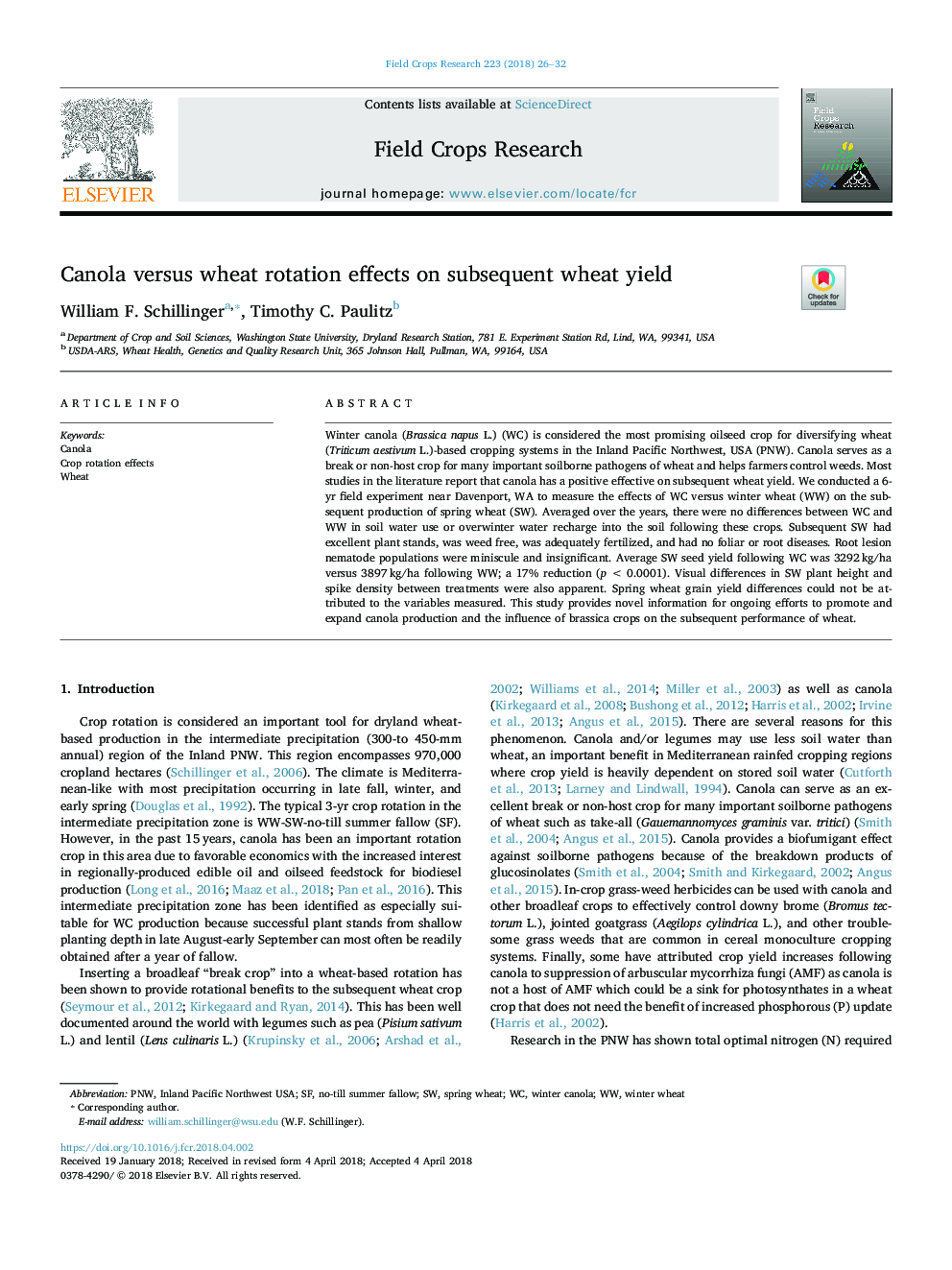| کد مقاله | کد نشریه | سال انتشار | مقاله انگلیسی | نسخه تمام متن |
|---|---|---|---|---|
| 8879137 | 1624640 | 2018 | 7 صفحه PDF | دانلود رایگان |
عنوان انگلیسی مقاله ISI
Canola versus wheat rotation effects on subsequent wheat yield
دانلود مقاله + سفارش ترجمه
دانلود مقاله ISI انگلیسی
رایگان برای ایرانیان
موضوعات مرتبط
علوم زیستی و بیوفناوری
علوم کشاورزی و بیولوژیک
علوم زراعت و اصلاح نباتات
پیش نمایش صفحه اول مقاله

چکیده انگلیسی
Winter canola (Brassica napus L.) (WC) is considered the most promising oilseed crop for diversifying wheat (Triticum aestivum L.)-based cropping systems in the Inland Pacific Northwest, USA (PNW). Canola serves as a break or non-host crop for many important soilborne pathogens of wheat and helps farmers control weeds. Most studies in the literature report that canola has a positive effective on subsequent wheat yield. We conducted a 6-yr field experiment near Davenport, WA to measure the effects of WC versus winter wheat (WW) on the subsequent production of spring wheat (SW). Averaged over the years, there were no differences between WC and WW in soil water use or overwinter water recharge into the soil following these crops. Subsequent SW had excellent plant stands, was weed free, was adequately fertilized, and had no foliar or root diseases. Root lesion nematode populations were miniscule and insignificant. Average SW seed yield following WC was 3292â¯kg/ha versus 3897â¯kg/ha following WW; a 17% reduction (pâ¯<â¯0.0001). Visual differences in SW plant height and spike density between treatments were also apparent. Spring wheat grain yield differences could not be attributed to the variables measured. This study provides novel information for ongoing efforts to promote and expand canola production and the influence of brassica crops on the subsequent performance of wheat.
ناشر
Database: Elsevier - ScienceDirect (ساینس دایرکت)
Journal: Field Crops Research - Volume 223, 15 June 2018, Pages 26-32
Journal: Field Crops Research - Volume 223, 15 June 2018, Pages 26-32
نویسندگان
William F. Schillinger, Timothy C. Paulitz,